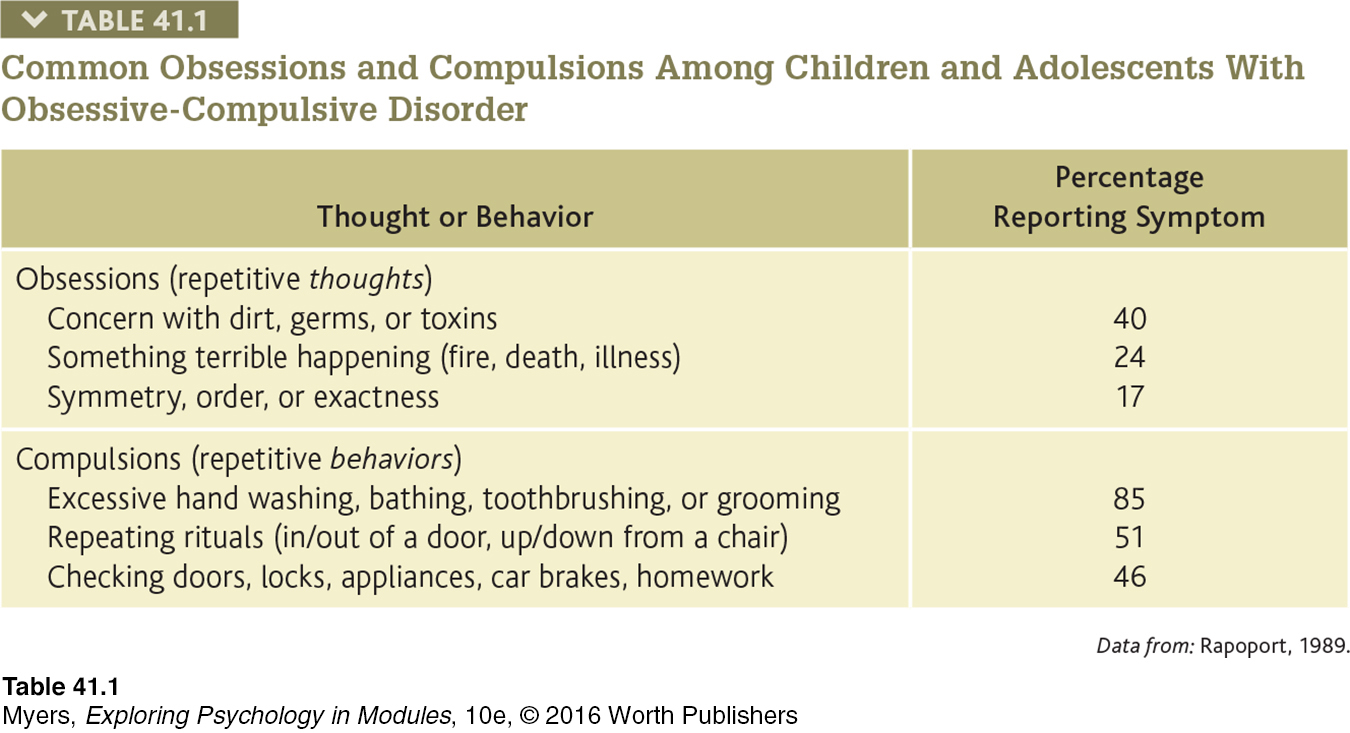41.2 Obsessive-Compulsive Disorder
41-
obsessive-compulsive disorder (OCD) a disorder characterized by unwanted repetitive thoughts (obsessions), actions (compulsions), or both.
As with the anxiety disorders, we can see aspects of our own behavior in obsessive-compulsive disorder (OCD). Obsessive thoughts are unwanted and so repetitive it may seem they will never end. Compulsive behaviors are responses to those thoughts.

 For a 7-
For a 7-
We all are at times obsessed with thoughts that will not go away, and we all at times behave compulsively. Anxious about how your place will appear to others, you may catch yourself compulsively cleaning before guests arrive. Concerned that you may not make the grade on your final, you may find yourself lining up books and pencils “just so” before studying. On a small scale, obsessive thoughts and compulsive behaviors are a part of everyday life. They cross the fine line between normality and disorder when they persistently interfere with everyday life and cause us distress. Checking to see that you locked the door is normal; checking 10 times is not. Washing your hands is normal; washing so often that your skin becomes raw is not. (TABLE 41.1 offers more examples.) At some time during their lives, often during their late teens or twenties, some 2 percent of people cross that line from normal preoccupations and fussy behaviors to debilitating disorder (Kessler et al., 2012). Twin studies reveal that OCD has a strong genetic basis (Taylor, 2011). Although the person knows the anxiety-

Data from: Rapoport, 1989.
OCD is more common among teens and young adults than among older people (Samuels & Nestadt, 1997). A 40-